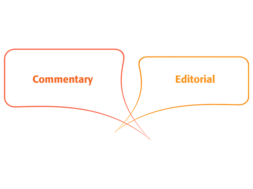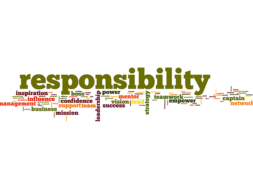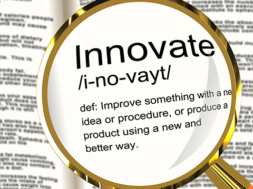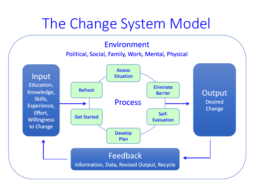
Thriving and Prospering in the Human Age: An Open Letter to 2015 College Graduates
By James H. Johnson, Jr., Ph.D., William R. Kenan, Jr. Distinguished Professor of Entrepreneurship and Strategy, University of North Carolina at Chapel Hill
A “learning mindset” and three specific skills — entrepreneurial acumen, contextual intelligence, and cultural elasticity or soft skills acumen — are required in order to thrive and prosper in the Human Age, the latest phase in the evolution of a hyper-competitive global economic system, where inner human potential reportedly will be the primary driver of all innovations in our economy and advances in our lives. 2015 college graduates must either hone or develop these skills so that they are able to respond sensitively, nimbly, and quickly to both challenges and opportunities in the Human Age’s new world of work.
Over the past decade, I have devoted considerable research attention to the profound economic and demographic transformations we are currently experiencing as a nation and as a global community (Johnson, 2006, 2009, 2013; Johnson & Kasarda, 2008, 2011). It is apparent from the accumulated evidence that we are entering a new phase in the historical evolution of our increasingly global economic system. In the words of Jeffery A. Joerres, Chairman, CEO, and President of the ManPower Group — the global labor recruitment behemoth,
…we are entering what is called the Human Age, where inner human potential will be the primary driver of innovations in our economy and of all major advances in our lives (Joerres, 2013).
Given the hard work and struggles all of you have endured in your efforts to graduate this year, my objectives in writing to you are twofold: (1) to highlight the essential skills I believe you must have in your toolkits to be successful in the Human Age; and (2) to give you a few tips about how to market yourself in the hyper-competitive global marketplace of the 21st century. As essential background, I shall begin with a few remarks about the current state of the U.S. economy and the distinguishing features of the Human Age.
DOWNLOAD ARTICLEBackground and context
As many of you contemplate either entering or moving up in the labor market, the good news is that our economy is on the mend. We are slowly but surely rebounding from the worst economic downturn since the Great Depression (Farber, 2011). Between 2007 and 2009, we lost 8.7 million jobs in this country. And our unemployment rate skyrocketed to 10% in 2009, up from 5.0% prior to the onset of the recession in 2007 (Goodman, 2009; BLS Spotlight on Statistics, 2012).
To work our way out of the economic malaise, economists told us in 2012 we needed to create 208,000 jobs every month over the next 8 years to return to pre-recession employment levels (Looney & Greenstone, 2012). According to the Bureau of Labor Statistics (BLS), our economy has created an average of about 269,000 jobs each month over the past twelve months (Bureau of Labor Statistics, 2015a). Despite economic activity disruptions due to the brutally cold weather, record snowfall, and ice storms, job gains reportedly averaged 197,000 per month between January and March of this year (Bureau of Labor Statistics, 2015a). And during the month of April, the U.S. economy reportedly added 223,000 jobs (Bureau of Labor Statistics, 2015b).
There are other indicators, which also suggest that a full economic recovery is underway (Irwin, 2015). Our current unemployment rate is 5.4% — a six year low and a rate characterized by some economists as the new “normal” in a highly volatile global economy (McIntyre, 2014). Companies are laying-off and firing fewer workers. The “quit” rate in firms is on the rise — a sign of growing confidence on the part of workers that job growth is sufficiently robust that they will be able to find another — and perhaps better — job if they quit the one they currently have (K@W, 2014). And perhaps the strongest indicator of a sustained economic recovery, average hourly earnings for ordinary workers have risen by 2.1% over the past year (Swartz, 2014).
But the world of work is changing dramatically as we rebound from the Great Recession of 2007-2009. In fact, across the last three recessions, long term joblessness — those unemployed for 6 months or longer — increased more rapidly among people with some college, a bachelor’s degree or higher than it did among people with a high school diploma or less (Allegretto & Stettner, 2004; Mishel, 2011;White, 2014). The incidence of poverty also increased more rapidly among the better educated than the less well educated during the most recent recession.
At the same time, employers have constantly complained about the inability to find skilled workers to fill critical positions in their firms.
In fact, according to surveys conducted by Deloitte Consulting (2010) and The Economist Intelligence Unit (2012), global companies continue to anticipate a major shortage of the types of workers they will need to propel growth and expansion in the years ahead.
How is it that business leaders and HR professionals continue to anticipate such a shortage of workers when, according to the BLS, thousands of college graduates under the age of 25 are either unemployed or underemployed (Witsil, 2013)? A wide range of explanations has been offered for this seeming paradox.
One of the explanations — the one that resonates most strongly with me — posits that we are on the cusp of the next great transformation in the world economy. One that requires that you possess, above and beyond a college degree, a specific set of human capital assets and technical skills in order to be either attractive as a potential employee or successful as an entrepreneur in the Human Age (Joerres, 2013, p. 5; The Economist Intelligence Unit, 2012, p. 30).
So what are the characteristics of the Human Age and what specific skills are required to succeed in it? To again quote the leader of the ManPower Group — the firm that specializes in global labor recruitment, we are entering a new reality in which “human potential itself will become the major agent of economic growth” (Joerres, 2013, p. 5). Distinguishing this new reality from earlier epochs in our economic history, he states that (Joerres, 2013, p. 5):
- In the past, human ingenuity, endeavor and innovation led to a new technology or way of organizing the world that transformed it: Previous eras were defined first by the raw materials our ancestors bent to their will — stone, iron, and bronze; then they were characterized by the domains people conquered with ever-improving technology — industry, space, and information. Now, it will be human potential itself that will be the catalyst for change and the global driving force—economically, politically and socially (emphasis added).
One of the lessons the Great Recession taught corporate leaders is that having the right people in the right place at the right time is the key to their competitiveness in an economy where unpredictable and unbridled change is the only constant.
In the business community, the prevailing belief today is that “the only way to adapt, evolve and rebuild [following the Great Recession] will be through the determination of the human spirit” (Joerres, 2013, p. 6). To weather uncertainty, employers and HR professionals assert that we will have to “attract, retain and unleash this inner human potential of the right people to succeed in the Human Age” (Joerres, 2013, p.6, emphasis added).
Essential skills
As 2015 college graduates, how do you unleash and leverage your vast human potential in an increasingly volatile and unpredictable world? That is, how do you ensure employers that you are the right people?
Research suggests that you will have to demonstrate three specific skills: entrepreneurial acumen, contextual intelligence, and cultural elasticity or soft skills acumen (Johnson & Kasarda, 2008). Permit me to elaborate briefly on each one of these required skills.
In the Human Age, an entrepreneurial mindset is required because “certain uncertainty” will be the new normal in the world of business and work (Joerres, 2014; Linn, 2014; Osborn, 2014). Emblematic of the need for an entrepreneurial mindset, research shows that “Companies are clearly struggling to recruit those with the apparently rare ability to guide them through an unpredictable and competitive external environment” (The Economist Intelligence Unit, 2012, p. 34). To thrive in the Human Age, you will have to demonstrate an ability to deal with ambiguity, a willingness to take incalculable risks, and the capability to be tenacious and decisive in responding to unanticipated crises and opportunities (Johnson & Kasarda, 2008).
In the Human Age, success will hinge on your ability to be “creative” in devising “innovative” solutions to a company’s or Society’s most pressing problems. It does not matter whether you aspire to work in the for-profit, not for profit, or government sector, an entrepreneurial mindset is a prerequisite for success in the Human Age. Like the consummate traditional business entrepreneur, if one door closes in your face, you will have to display the entrepreneurial tenacity to cut another door that leads to your or your employer’s next economic opportunity.
In addition to an entrepreneurial mindset, contextual intelligence also will be highly valued in the Human Age (Kurtz, 2008a, b; Khanna, 2014). Contextual intelligence is defined as an acute sensitivity to the social, political, technological, economic, and demographic drivers of change that will likely define the future (Sertl, 2014). Having the foresight to anticipate change is another way to define contextual intelligence.
HR professionals often assert that talent is the new “it”—the new capitalism — in the Human Age. But, “[t]alent isn’t just people, it is people with specific skills, behaviors and ways of operating . . . in a chaotic, global environment, that fits the needs of an organization”(Joerres, 2013, p. 6). In today’s highly volatile global environment, work is not where you go; rather it is what you do (Weisberg and Eggers, 2010). In the Human Age, “Where we work and what we look like when we work [will] matter much less than what we can contribute”(Joerres, 2013, p. 9). And what we can contribute will be inextricably linked to our ability to amass contextual intelligence that in turn will give us the foresight to anticipate change and manage ambiguity.
Individuals who are masters of contextual intelligence can see around the corner well before they approach it
They can peer through the fog of economic uncertainty and global insecurity and identify unanticipated challenges and opportunities (Johnson & Kasarda, 2008).
In the Human Age, success will hinge less on what you know and more on what you can find (Joerres, 2013, p. 9). To succeed, you must leverage state of the art technology and the analytical skills you have acquired to mine big data and analyze information from a wide array of sources, with an eye toward uncovering heretofore unrecognized patterns and relationships that lead to new scientific discoveries and new and/or more effective ways to solve pressing organizational and societal problems (The Economist Intelligence Unit, 2012; Wooster, 2013).
For those of you who aspire to be entrepreneurs, becoming adept at contextual intelligence gathering will help you avoid being blind-sided by unanticipated changes and disruptive trends that can potentially derail your business. How do you develop personal contextual intelligence?
You leverage the power and influence of the Internet, the World Wide Web, and the dizzying array of smart technologies and social networking tools you have at your disposal. You type key words or phrases corresponding to what you view as the future drivers of change in the search engines of your choice and then specify how often you want to be alerted about the latest developments in those topical areas. And you become a voracious consumer of the contextual intelligence that you uncover.
Along with entrepreneurial acumen and contextual intelligence, you also will need impeccable soft skills and cultural elasticity to thrive and prosper in the Human Age
Soft skills are those intangible attributes, abilities, skills, and traits that pertain to personality, attitude, and behavior rather than to formal or technical knowledge. These skills include the ability to think critically, reason analytically, solve problems, communicate clearly both orally and in writing, and work in teams that increasingly will transcend international boundaries (Johnson & Kasarda, 2008). Cultural elasticity is the ability to utilize your soft skills to move fluidly from one environmental milieu or situational context to the next.
For all practical purposes, a borderless workforce will be the norm in the Human Age (Joerres, 2013, p. 24). Companies are leveraging communication technology, especially mobile broadband and mobile cellular technologies, and engaging in recruitment via strategic migration — domestic and international — to find the talent they need. As a consequence, work will increasingly take place remotely, virtually, and collaboratively (Weisberg & Eggers, 2010). In addition, owing in parts to the economic downturn and increases in longevity, fewer Boomers — those of us born between 1946 and 1964 — are retiring. And some retirees have been forced back into the workforce—dubbed the “newly unretireds” — as the recession wreaked havoc on their retirement portfolios (Johnson & Kasarda, 2011).
In the Human Age, as a consequence of these developments, you will have to demonstrate the ability to interface successfully with associates, collaborators, competitors, and customers or clients who not only are diverse in terms of race/ethnicity, gender and international origin but also age. The Human Age workforce will span four generations — Pre-Boomers, Boomers, Generation X, and Generation Y — all of whom bring to the new world of work different core values, communication and interaction styles, work ethics and values, leadership styles and perspectives on feedback and rewards (The Economist Intelligence Unit, 2012, p. 32).
To compete in a workforce that is both borderless and multigenerational, you will have to demonstrate the ability to code switch, that is, to use your cultural elasticity skills to change your behavioral norms depending on the situational context in which you find yourself at any given point in time. Why is the ability to code switch or cultural elasticity an important skill in the hyper-competitive global economy of the 21st century?
It is well understood that a diverse, culturally competent workforce improves companies’ ability to both innovate and attract and retain diverse clients.
But surveys reveal that corporate executives are particularly perturbed by the lack of softs skills in prospective hires, especially the absence of good interpersonal skills.
They note that cultural and linguistic misunderstandings — internally and with clients and customers — are very costly, often resulting in significant financial losses, especially in cross border transactions (The Economist Intelligence Unit, 2012, p.39).
Given that all of you have earned college degrees, the crucial remaining question is: How do you individually market or strategically position yourself for success in the Human Age?
To distinguish yourself, you must develop your own personal brand (Dugan, n.d.; Study Guides and Strategies, n.d.; Ellis, 2013; Hansen, n.d.). Personal branding requires that you cast aside the usual descriptions employers depend on to situate prospective hires in their firms or organizations (Peters, 1999). In developing your personal brand, you must answer the question: What do I do for a living? And you must not frame your answer to this question in terms of job title or function. Instead, you must explain the end result of what you do.
In developing your personal brand, you must think of yourself differently. Start by identifying qualities or characteristics that distinguish you from your peers — your most noteworthy traits, your greatest strengths, and what makes you stand out. If you are going to become a brand, you have to focus on what you do that adds value (Stooker, n.d.). Personal branding requires that you develop what is referred to as “reputational power:” You must become known for making significant contributions in some area of expertise (Swanson, n.d.).
And once you develop your personal brand, you need to devise a strategy for marketing yourself. A personal website is probably your best marketing tool (Hansen, n.d.). Your personal website should help the viewer understand how valuable you are and how you can help them get what they want. It should contain contact information, a biographical sketch, a mission statement, products/services you offer, and anything else that will promote what you do.
Starting now, you must view your career as a portfolio of educational experiences and projects, through which you acquire new skills, gain new expertise, develop new capabilities, broaden and deepen your networks, and constantly refine your brand (Peters, 1999; Hansen, n.d.).
Concluding observations
In the Human Age, continued disruptive changes in the global marketplace and the rapid pace of technological change will mean, in all likelihood, that you will have to constantly reinvent yourself (Joerres, 2013, p. 7).
Given this likely state of affairs, you must therefore develop and maintain a “learning mindset” to ensure that you continue to expand or broaden your human potential, hone your cultural competencies, refine your communications skills, and leverage your contextual intelligence and entrepreneurial acumen throughout your career. Our national competitiveness in the global marketplace rests on your dogged tenacity in each of these domains.
Embracing a learning mindset, I believe, will enable you to respond sensitively, nimbly, and quickly to both the challenges and the opportunities that are likely to characterize our lives and the new world of work in the years ahead. Foremost among the payoffs, it will ensure that you are able to compete successfully for employment and self-employment opportunities in the highly volatile and unpredictable global economy of the 21st Century.
References
Allegretto, S. & Stetner, A. (2004, March 3). Educated, experienced, and out of work. Economic Policy Institute, Issue Brief No. 198. Retrieved from http://www.epi.org/publication/issuebriefs_ib198/.
BLS SpotLight on Statistics. (2012, February). The Recession of 2007-2009. Retrieved from http://www.bls.gov/spotlight/2012/recession/pdf/recession_bls_spotlight.pdf
Bureau of Labor Statistics. (2015a, March). The employment situation. Retrieved from http://www.bls.gov/news.release/archives/empsit_04032015.pdf
Bureau of Labor Statistics. (2015b, April 15). The employment. Retrieved from http://www.bls.gov/news.release/empsit.nr0.htm
Deloitte Consulting, LLP. (2010, December). Talent edge 2020: Blueprints for the new normal. Retrieved from http://www.deloitte.com/assets/dcom-unitedstates/local%20assets/documents/imos/talent/us_talentedge2020_121710.pdf
Dugan, D. (n.d.). Sell Yourself: 14 steps to creating a powerful personal brand. Retrieved from http://www.salary.com/sell-yourself-14-steps-to-creating-a-powerful-personal-brand/slide/3/
Ellis, B. (2013). Personal branding: Marketing yourself in the workplace. Retrieved from http://onlinecareertips.com/2013/04/personal-branding-marketing-yourself-in-the-workplace;
Farber, H. (2011). Job loss in the great recession: Historical perspective from the displaced worker Survey1984-2010. NBER Working Paper No. 17040. available at http://www.nber.org/digest/sep11/w17040.html\
Goodman, P. (2009, November 7). U.S. Unemployment Rare Hits 10.2%, Highest in 26 Years. The New York Times. Retrieved from http://www.nytimes.com/2009/11/07/business/economy/07jobs.html?_r=0&pagewanted=print
Hansen, R. (n.d.). Building your personal brand: Tactics for successful career branding. Retrieved from http://www.quintcareers.com/career_branding.html
Irwin, N. (2015, May 8). Jobs: Not good news. Not bad news. Relieving News. New York
Times. Retrieved from http://www.nytimes.com/2015/05/09/upshot/april-jobs-not-good-news-not-bad-news-relieving-news.html?emc=edit_th_20150509&nl=todaysheadlines&nlid=13175790&_r=0
Joerres, J. (2014, January 25). How Can Companies Thrive in the Age of Disruption? Retrieved from http://forumblog.org/2014/01/can-companies-thrive-age-disruption/
Johnson, Jr., J. (2013). The demographic case for immigration reform. The Ripon Forum, 47, 17-19.
Johnson, Jr., J. (2009, August). Changes on the horizon for postsecondary education. Career Education Review, 9-13.
Johnson, Jr., J. (2006). People on the move: Implications for U.S. higher education. The College Board Review, 209, 4-9.
Johnson, Jr., J. & Kasarda, J. (2011). Six disruptive demographic trends: What census 2010 will reveal. Chapel Hill: Frank Hawkins Kenan Institute of Private Enterprise, Kenan-Flagler Business School, University of North Carolina at Chapel Hill.
Johnson, Jr., J. & Kasarda, J. (2008, April-June). Jobs on the move: Implications for higher education. Planning for Higher Education, 22-33.
K@W (2014, October 9). Contempt, crazy hours and the economics of quitting your job.
Knowledge@Wharton, Retrieved from http://knowledge.wharton.upenn.edu/article/when-its-time-to-quit-your-job/
Khanna, T. (2014, September). Contextual intelligence. Harvard Business Review, Retrieved from https://hbr.org/2014/09/contextual-intelligence.
Kurtz, M. (2008a). Contextual intelligence: An emerging competency for global Leaders. Regent Global Business Review, 2, 5-8.
Kurtz, M. (2008b). Toward a conceptual model of contextual intelligence: A transferable leadership construct. Leadership Review, 8, 18-31.
Linn, A. (2014, June 16). Economic uncertainty feels like the new normal. Retrieved from http://www.nbcnews.com/id/44065159/ns/business-personal_finance/t/economic-uncertainty-feels-new-normal/
Looney, A. & Greenstone, M. (2012). Understanding the jobs gap and what it says about america’s evolving work force. The Hamilton Project, Retrieved from http://www.hamiltonproject.org/papers/understanding_the_jobs_gap_and_what_itsays_about_americas_evolving_wo/
Manpower Group. (2013). Entering the Human Age: Thought Leadership Insights. Retrieved from http://www.manpowergroup.com/wps/wcm/connect/8a0aa2a7-d6ed-4845-96eo b99f8e84e558/EnteringtheHumanAge_082013.pdf?MOD=AJPERES
McIntyre, D. (2014, January 10). Unemployment rate is still far from normal. USA Today. Retrieved from http://www.usatoday.com/story/money/business/2014/01/10/unemployment-rate-is-still-far-from-normal/4411359/.
Mishel, L. (2011). Education is not the cure for high unemployment or for income Inequality. Economic Policy Institute, Briefing Paper No. 286. Retrieved from
http://www.epi.org/publication/education_is_not_the_cure_for_high_unemployment_or_for_income_inequality/
Osborn, M. (2014, July 23). Instability, uncertainty, and volatility: The new normal. Retrieved from http://blogs.sap.com/innovation/industries/instability-uncertainty-volatility-new-normal-01256331
Peters, T. (1999). The brand you 50: Or fifty ways to transform yourself from an employee into a brand that shouts distinction, commitment, and passion. New York: Alfred A. Knopf, Inc.
Swartz, N. (2014, December 6). Big job gains and rising pay in labor data. The New York Times. Retrieved from http://www.nytimes.com/2014/12/06/business/economy/november-jobs-unemployment-figures.html?emc=edit_th_20141206&nl=todaysheadlines&nlid=13175790.
Sertl, J. (2014, September 2). Contextual intelligence & the future of work. Retrieved from https://www.linkedin.com/today/post/article/20140902030247-407402-contextual-intelligence-the-future-of-work
Stooker, R. (n.d.). Marketing is how you show others how you can help them, including selling yourself for jobs and promotions. Quintessential Careers. Retrieved from http://www.quintcareers.com/printable/job-seeking_selling.html
Study Guides and Strategies. (n.d.). Creating and presenting your personal brand. Retrieved from http://www.studygs.net/brand/
Swanson, R. (n.d.). Take control of your personal branding. Quintessential Careers. Retrieved from http://www.quintcareers.com/personal_branding.html
The Economist Intelligence Unit. (2012). Competing across borders: How cultural and communication barriers affect business. Retrieved from http://www.jku.at/zsp/content/e48784/e164612/Competing_across_borders.pdf
Weisberg, A. & Eggers, W. (2010, May 14). Workplace flexibility as the new normal. FCW. Retrieved from http://fcw.com/articles/2010/05/14/fcw-challenge-workforce-flexibility-telework.aspx
White, M. (2014, October 19). Highly educated, unemployed and tumbling down. USA Today. Retrieved from http://www.usatoday.com/story/money/personalfinance/2014/10/19/cnbc-overeducated-underemployed/17390047/.
Witsil, F. (2013, September 2). Is part-time work the new normal? Detroit Free Press. Retrieved from http://archive.freep.com/article/20130902/BUSINESS06/309010077/hiring-part-time-work
Wooster, B. (2013). Contextual intelligence (CQ): A definition. 21st Club. Retrieved from http://www.21stclub.com/blog/2013/8/11/contextual-intelligence-a-definition
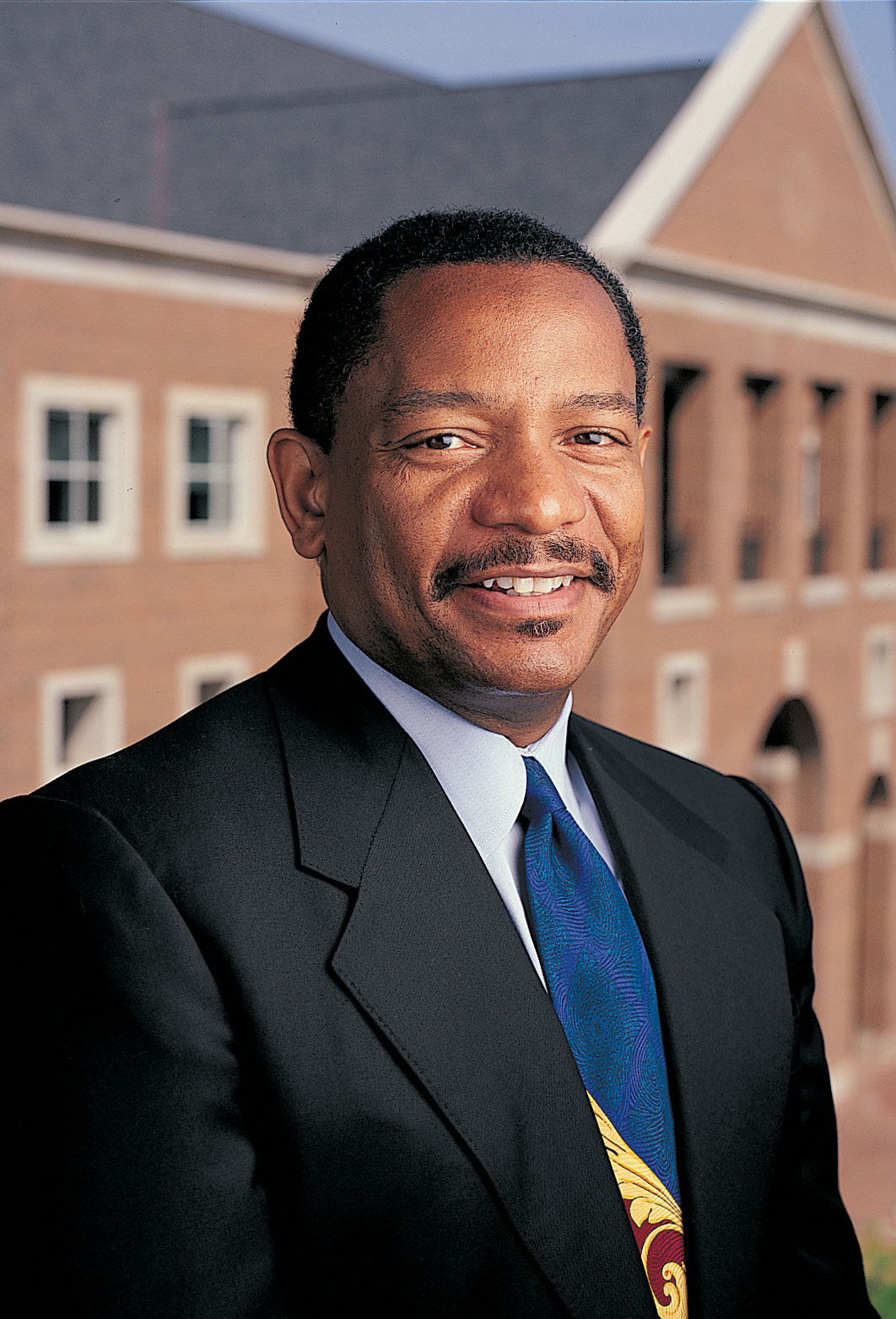
James H. Johnson, Jr. is the William Rand Kenan, Jr. Distinguished Professor of Entrepreneurship and Strategy at the University of North Carolina at Chapel Hill. He holds degrees from North Carolina Central University (B.S., 1975), the University of Wisconsin at Madison (MS, 1977), and Michigan State University (PhD, 1980).
Selected by Fast Company magazine as one of the “17 … brightest thinkers and doers in the new world of work,” Jim’s current research and consulting activities focus on the workforce and workplace implications of post-1990 demographic changes in the U.S; and on how to create highly competitive and sustainable business enterprises and communities in the current era of economic uncertainty and global insecurity. His research on these and related topics has been widely cited in a number of national media outlets, including the New York Times, Los Angeles Times, Wall Street Journal, Washington Post, Detroit Free Press, Newsweek, Time Magazine, U.S. News and World Report, and Business Week. He has also appeared on a number of national television shows, including The Today Show on NBC, CNN Headline News, the CBS Evening News, ABC Nightly News, Sunday Morning on CBS, This Week in Review on NBC, and North Carolina People with William Friday.
Prior to joining the UNC-CH faculty, Jim was a professor at the University of California, Los Angeles, where he spent the first twelve years of his professional career.
Contact Information: James H. Johnson, Jr., PhD (Jim) // Director, Urban Investment Strategies Center // William Rand Kenan, Jr. Distinguished Professor of Entrepreneurship and Strategy Kenan Institute of Private Enterprise // The University of North Carolina at Chapel Hill // 919-962-2261 // jim_johnson@unc.edu


